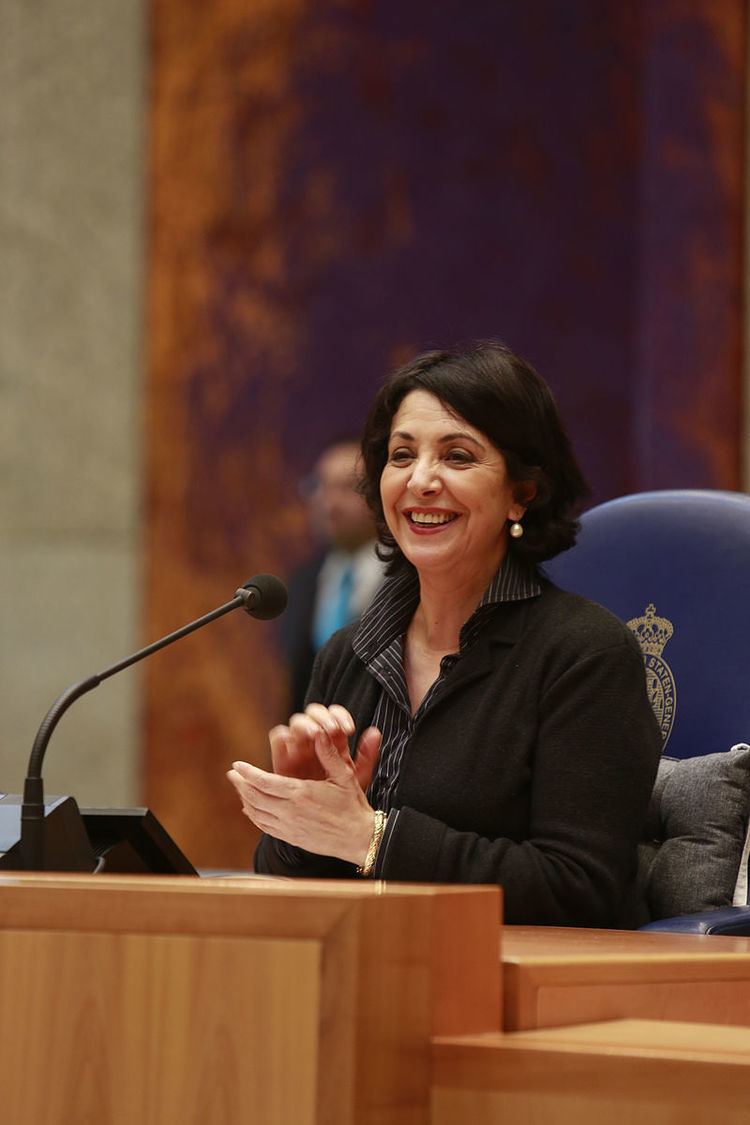 | ||
Style His or Her ExcellencyMister or Madame Speaker Term length Four yearsNo term limit Formation 21 September 1815; 201 years ago (1815-09-21) First holder Jan Elias Nicolaas van Lynden van Hoevelaken | ||
The Speaker of the House of Representatives (Dutch: Voorzitter van de Tweede Kamer der Staten-Generaal) is one of the 150 Members of the Dutch House of Representatives and is elected to lead the meetings of the House. They are also chairing the Presidium and the Procedure Committee (Commissie van de Werkwijze).
Contents
The office is currently held by Khadija Arib of the Labour Party (PvdA). She was elected on 13 January 2016 in an interim election, after Speaker Anouchka van Miltenburg of the People's Party for Freedom and Democracy (VVD) resigned on 12 December 2015. She was First Deputy and acting Speaker until her election.
Duties
As a Member of the House of Representatives, the Speaker inherits the same rights and obligations. The Speaker leads the meetings of the House. This means that they open and close the meetings and at meetings determines who speaks. The Members of the House and the Cabinet ministers and State secretaries never speak directly against each other but always through or to the Speaker. One reason for this is that it theoretically impossible to be angry at the person with whom one is in debate. One finally speaks against the Speaker who is impartial.
Like all other Members of the House, the Speaker also takes part in the voting. Besides leading the meetings, the Speaker represents the House as a whole, such as in ceremonies and with visits by foreign heads of state. As chair of the Presidium they also play a role in determining the budget of the House, setting its agenda and appointing its staff.
The Speaker is supported in their duties by Deputy Speakers, ranked by number in order of precedence, which also are Members of the House. In the event that the Speaker is unable to fulfil their duties or the position becomes vacant, the meeting is chaired by the First Deputy Speaker.
The Speaker has a seat with a backrest that is higher than the other seats in the House.
Election
The Speaker is elected by the Members of the House. Such an election takes place shortly after a general election or after the position became vacant. The House adopts a profile that outlines the desired qualities that potential candidates should have, such as prior experience and personal traits. The profile is not binding, however. Members can submit their candidacy, but this is not required.
The election itself requires the participation of at least 76 Members. To win the election, a Member needs to obtain an absolute majority of the votes cast (more than 50%). The voting takes place by open and secret ballot, which means that Members have to write down the name of the preferred Member themselves and that the vote is not disclosed. Members can choose between writing down the name of one of the candidates, the name of any other Member (whether they are standing or not), something invalid or nothing at all.
An election requires multiple voting rounds when no Member wins an absolute majority. If there is no winner after two rounds, then the rules of voting are different. In the third round, the list of Members who were voted for in the second round is definitive. In addition, the number of eligible Members is limited, depending on the number of Members who received votes in the second round. If fewer than five Members received votes then all Members except the two frontrunners are eliminated from the election, otherwise only four frontrunners remain. In the fourth round, only the two frontrunners are eligible, any other votes are deemed invalid. If both Members have the same number of votes, the election is decided by lot.
